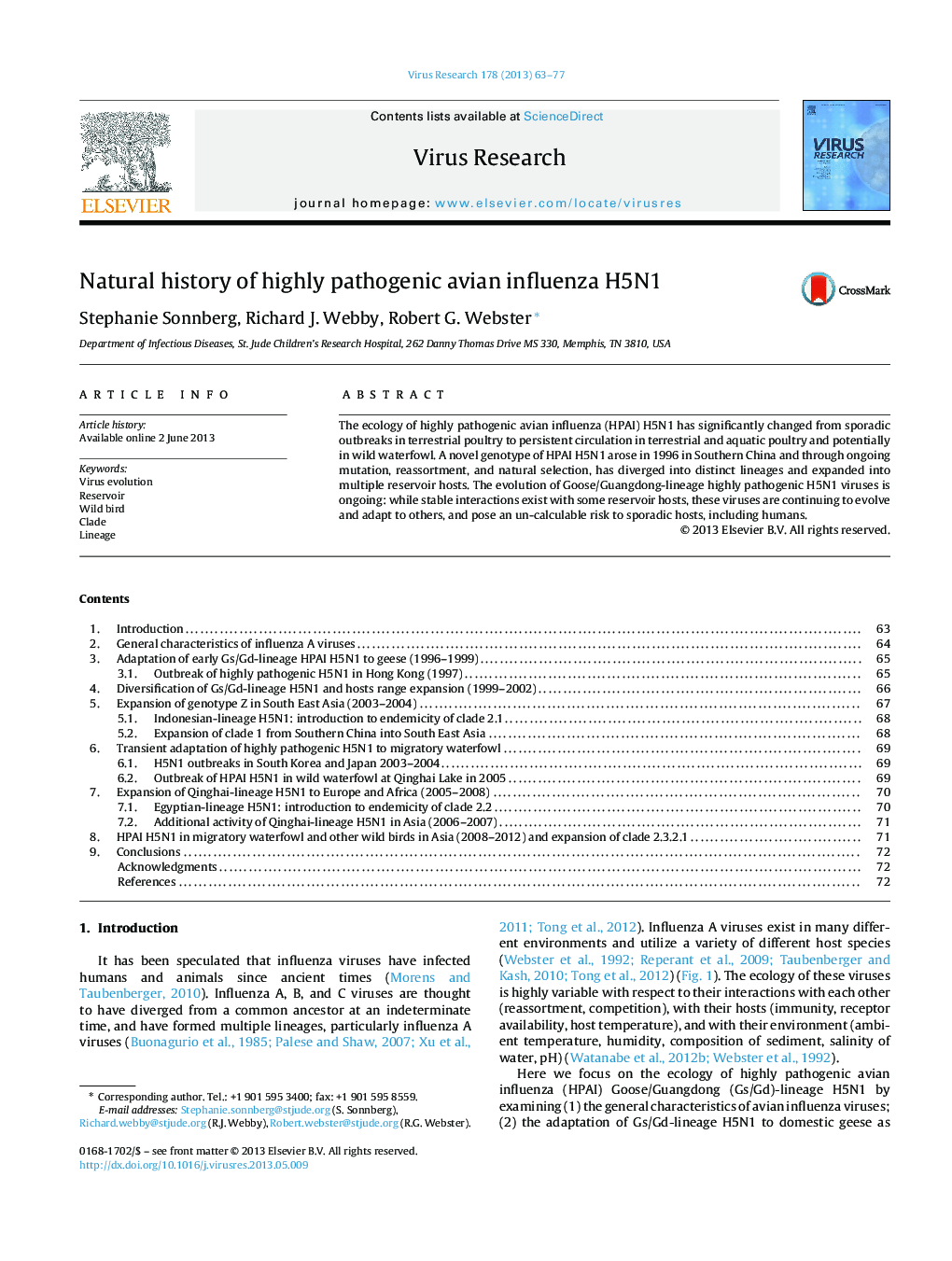| Article ID | Journal | Published Year | Pages | File Type |
|---|---|---|---|---|
| 3428542 | Virus Research | 2013 | 15 Pages |
•The ecology of highly pathogenic (HP) H5N1 is diverse, specific to strain and to host species.•Over time Asian HP H5N1 viruses have expanded their host range from geese to poultry.•Mutation and reassortment have given rise to multiple virus lineages.•Asian HP H5N1 has utilized wild waterfowl in long-distance expansion.•Wild waterfowl are in a transient state toward becoming a reservoir of HP H5N1.
The ecology of highly pathogenic avian influenza (HPAI) H5N1 has significantly changed from sporadic outbreaks in terrestrial poultry to persistent circulation in terrestrial and aquatic poultry and potentially in wild waterfowl. A novel genotype of HPAI H5N1 arose in 1996 in Southern China and through ongoing mutation, reassortment, and natural selection, has diverged into distinct lineages and expanded into multiple reservoir hosts. The evolution of Goose/Guangdong-lineage highly pathogenic H5N1 viruses is ongoing: while stable interactions exist with some reservoir hosts, these viruses are continuing to evolve and adapt to others, and pose an un-calculable risk to sporadic hosts, including humans.
